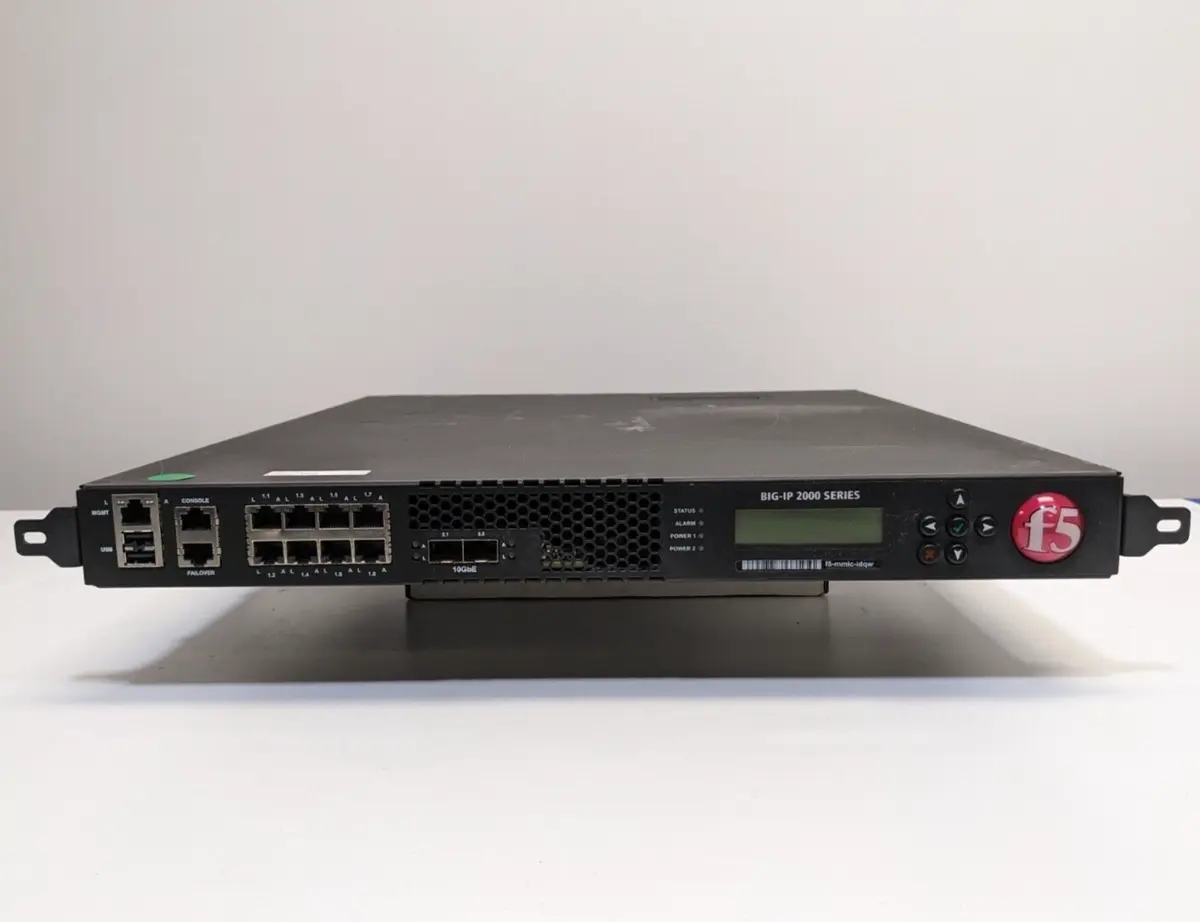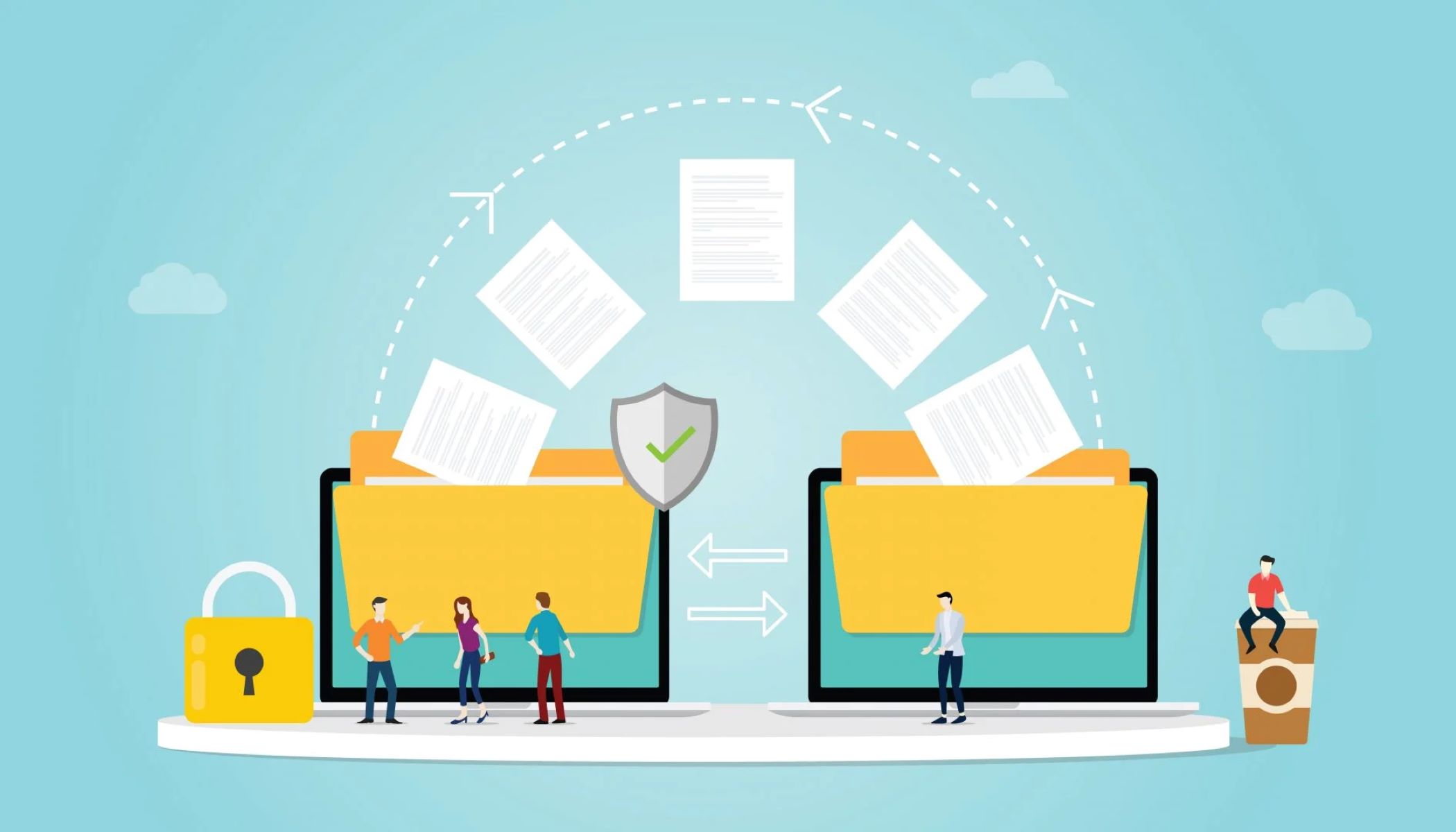Introduction
In our increasingly digital world, the amount of data generated and collected is growing exponentially. As organizations harness the power of big data to gain valuable insights, the need to secure this vast amount of information becomes of paramount importance. Big data is not only valuable to businesses, but also to cybercriminals seeking to exploit vulnerabilities and gain unauthorized access to sensitive data.
Securing big data is not a one-size-fits-all solution. It requires a comprehensive and multifaceted approach that encompasses various security measures and best practices. This article takes a closer look at some of the best practices that organizations can implement to safeguard their big data.
By understanding the importance of securing big data, organizations can take proactive steps to protect against data breaches and maintain the trust of their stakeholders. Taking a proactive approach to security involves implementing measures to prevent unauthorized access, encrypting data at rest and in transit, monitoring for anomalies in real-time, and conducting regular security audits and risk assessments.
Implementing strong authentication measures is a fundamental aspect of securing big data. This involves using multi-factor authentication, such as a combination of passwords, fingerprints, or smart cards, to verify the identity of users. By requiring multiple factors for authentication, organizations can significantly reduce the risk of unauthorized access and data breaches.
Encrypting data both at rest and in transit is crucial for maintaining the confidentiality and integrity of big data. Encryption scrambles the data, making it unreadable to anyone without the proper decryption keys. By implementing strong encryption algorithms and regularly updating encryption keys, organizations can ensure that their data remains protected even if it falls into the wrong hands.
Access controls and role-based permissions play a critical role in securing big data. Organizations should adopt a principle of least privilege, granting access only to those individuals who require it to perform their job functions. Implementing role-based permissions allows organizations to assign specific privileges based on individuals’ roles and responsibilities, minimizing the risk of unauthorized access.
Monitoring and detecting anomalies in real-time is essential for identifying potential security breaches and responding swiftly. By employing advanced monitoring tools and technologies, organizations can detect unusual activities, such as unauthorized access attempts or abnormal data transfers, and take immediate action to mitigate the potential risk.
Understand the Importance of Securing Big Data
As the volume, velocity, and variety of data continue to grow, organizations are increasingly relying on big data analytics to gain valuable insights and make informed decisions. However, as the value and importance of big data increase, so does the need to protect it from potential threats. Understanding the importance of securing big data is crucial for organizations to effectively manage risks and safeguard their sensitive information.
Firstly, protecting big data is essential for maintaining the privacy and confidentiality of personal and sensitive information. Big data often includes a wealth of personally identifiable information (PII), such as names, addresses, social security numbers, and financial data. If this information falls into the wrong hands, it can lead to identity theft, financial fraud, and other potentially devastating consequences for individuals and organizations alike.
Moreover, securing big data helps to ensure compliance with various data protection and privacy regulations. Organizations that handle sensitive data, such as healthcare providers or financial institutions, must adhere to industry-specific regulations like the Health Insurance Portability and Accountability Act (HIPAA) or the General Data Protection Regulation (GDPR). Failing to comply with these regulations can result in hefty fines, legal repercussions, and reputational damage.
Furthermore, securing big data is crucial for maintaining the trust and confidence of customers and stakeholders. Today’s consumers are increasingly aware of the potential risks associated with data breaches and are more concerned about their privacy and the security of their personal information. Organizations that prioritize data security and demonstrate a commitment to protecting customer information are more likely to earn and retain the trust of their customers, giving them a competitive edge in the marketplace.
In addition to protecting against external threats, securing big data also helps organizations safeguard against internal risks. Insider threats, whether intentional or unintentional, can pose significant risks to data security. By implementing measures such as access controls, role-based permissions, and regular employee education and training, organizations can reduce the likelihood of internal breaches and protect their data from unauthorized access or misuse.
Overall, understanding the importance of securing big data is essential for organizations to mitigate risks, achieve compliance with regulations, maintain customer trust, and protect sensitive information. By adopting a proactive approach to data security and implementing best practices, organizations can effectively safeguard their big data and minimize the potential impact of data breaches and security incidents.
Implement Strong Authentication Measures
Implementing strong authentication measures is a critical component of securing big data and preventing unauthorized access. Traditional username and password combinations are no longer sufficient to protect sensitive information in today’s threat landscape. Organizations must adopt multi-factor authentication (MFA) to enhance the security of their data.
MFA involves requiring users to provide multiple forms of identification to verify their authenticity before granting access to the system or data. This typically involves a combination of something the user knows (such as a password), something the user has (such as a token or smart card), or something the user is (such as biometric data like fingerprints or facial recognition).
By using multiple factors for authentication, organizations can significantly reduce the risk of unauthorized access. Even if an attacker manages to obtain one factor – for example, a stolen password – they would still need to bypass the additional layers of authentication to gain access to the system or data. This adds an extra layer of security, making it much more challenging for cybercriminals to breach sensitive information.
Organizations can implement various types of MFA depending on their specific requirements and resources. Common methods include hardware tokens, software tokens, biometric authentication, and one-time password (OTP) generators. The choice of method depends on factors such as usability, cost, and the level of security required.
It’s important to note that while MFA greatly enhances security, it does add an additional layer of complexity for users. Organizations need to carefully consider usability and user experience when implementing MFA to strike a balance between security and convenience. Finding the right solution and providing clear instructions and support for users can help ensure smooth implementation and user acceptance.
In addition to implementing MFA, organizations should also establish password policies that encourage strong and unique passwords. Passwords should be complex, with a combination of uppercase and lowercase letters, numbers, and special characters. Users should be educated on the importance of regularly changing their passwords and not reusing them across multiple accounts.
Overall, implementing strong authentication measures, such as multi-factor authentication, is an essential step in securing big data. By requiring multiple forms of identification, organizations can significantly reduce the risk of unauthorized access and enhance the overall security of their data.
Encrypt Data at Rest and in Transit
Encrypting data both at rest and in transit is a critical step in ensuring the security and privacy of sensitive information. Encryption is the process of converting data into a format that is unreadable without the proper decryption keys. By encrypting data, organizations can protect it from unauthorized access, interception, and tampering.
Data at rest refers to data that is stored on storage devices, such as hard drives or databases. This includes data stored in cloud storage services, on-premises servers, or even portable storage devices. Encrypting data at rest involves applying encryption algorithms to the data before it is stored, making it unreadable to anyone without the proper decryption key.
In addition to encrypting data at rest, it is equally crucial to encrypt data in transit, which refers to data being transmitted over networks, such as the internet or internal networks. During data transmission, it is vulnerable to interception and eavesdropping by malicious actors. Encrypting data in transit ensures that even if intercepted, the data remains secure and unreadable.
To implement encryption at rest, organizations can use various encryption methods, including symmetric encryption and asymmetric encryption. Symmetric encryption uses a single encryption key for both the encryption and decryption processes. Asymmetric encryption, on the other hand, uses a pair of keys – a public key for encryption and a private key for decryption. Both methods have their advantages and usage scenarios, depending on the specific security requirements of the organization.
For encrypting data in transit, organizations can use secure communication protocols such as HTTPS, SSL/TLS, or VPNs (Virtual Private Networks). These protocols establish secure connections between endpoints, ensuring that data exchanged between them remains encrypted and protected from unauthorized access.
It is crucial to select strong encryption algorithms and regularly update encryption keys to stay ahead of evolving threats and encryption-breaking techniques. Additionally, organizations should follow industry best practices and comply with encryption standards and regulations specific to their industry or region.
Encrypting data at rest and in transit provides an additional layer of security and ensures that even if unauthorized individuals gain access to the data, they will be unable to decipher its contents without the proper decryption keys. This is especially important for sensitive and personally identifiable information, such as financial data or healthcare records, which are prime targets for cybercriminals.
Overall, implementing encryption techniques to protect data at rest and in transit is vital for securing big data. By encrypting data, organizations can safeguard sensitive information, maintain the integrity and confidentiality of their data, and mitigate the risk of data breaches or unauthorized access.
Use Access Controls and Role-Based Permissions
Implementing robust access controls and role-based permissions is crucial for ensuring the security of big data. Access controls determine who can access data and what actions they can perform, while role-based permissions assign specific privileges based on individuals’ roles and responsibilities within the organization.
Access controls allow organizations to enforce the principle of least privilege, granting access only to individuals who require it to carry out their job functions. By implementing access controls, organizations can minimize the risk of unauthorized access to sensitive data and reduce the potential for data breaches.
Role-based permissions provide a systematic and structured approach to granting access rights. This is achieved by assigning roles or groups to users based on their job functions and responsibilities. Each role is then associated with specific permissions and access levels, ensuring that users only have access to the data and resources necessary for their roles.
Role-based permissions help organizations to establish a clear and hierarchical system of access rights, making it easier to manage user access and permissions. It also simplifies the onboarding and offboarding process by granting or revoking access based on role assignments, rather than individually managing permissions for each user.
Organizations should regularly review and update access controls and role-based permissions to align with changes in personnel or job responsibilities. This helps to ensure that access rights are kept up to date and that only authorized individuals have access to sensitive data.
In addition to access controls and role-based permissions, organizations should implement strong authentication measures, such as multi-factor authentication, to further enhance the security of data. Combining access controls with strong authentication provides an additional layer of security, reducing the risk of unauthorized access even if credentials are compromised.
Regularly monitoring user activities and reviewing access logs is also crucial for detecting and addressing anomalies or suspicious behavior. Any unusual access patterns or unauthorized attempts should be flagged and investigated promptly. This helps organizations to identify potential security breaches, mitigate the impact, and take necessary actions to prevent future incidents.
It is important to note that access controls and role-based permissions should not only be applied to internal users but also extend to third-party vendors or external partners who may have access to the organization’s big data. Implementing strict controls and permissions for external entities minimizes the risk of data breaches due to compromised or unauthorized access.
Overall, using access controls and role-based permissions is a fundamental aspect of securing big data. By implementing these measures, organizations can enforce the principle of least privilege, manage user access effectively, and reduce the risk of unauthorized access or data breaches.
Monitor and Detect Anomalies in Real-Time
Monitoring and detecting anomalies in real-time is a critical aspect of securing big data. Traditional security measures are no longer sufficient to protect against increasingly sophisticated and evolving cyber threats. By implementing advanced monitoring tools and technologies, organizations can identify and respond to potential security breaches in a proactive and timely manner.
Real-time monitoring involves continuously monitoring data and network traffic to identify unusual or suspicious activities. This includes monitoring user access, data transfers, system logs, and network traffic patterns. By analyzing this data in real-time, organizations can detect anomalies and potential security breaches, allowing them to respond swiftly and mitigate the impact of any potential incidents.
Implementing real-time monitoring solutions enables organizations to establish baseline behavior patterns and set up alerts or triggers for any deviations from normal activities. This can include detecting abnormal login attempts, unusual data access patterns, or suspicious network traffic. By continuously monitoring for such anomalies, organizations can quickly identify potential threats and take appropriate actions to prevent further damage.
Advanced security information and event management (SIEM) systems can play a crucial role in real-time monitoring. These systems collect and analyze log data from various sources across the network, providing a holistic view of the organization’s security posture. SIEM platforms use machine learning algorithms and behavioral analytics to identify anomalies, detect potential threats, and generate real-time alerts.
In addition to SIEM, organizations can implement intrusion detection and prevention systems (IDPS) to monitor network traffic and detect any signs of malicious activity. IDPS systems can analyze packets, network protocols, and behavioral patterns to identify potential attacks or unauthorized access attempts. By continuously monitoring network traffic, organizations can respond promptly to any potential security incidents.
Real-time monitoring is not only limited to technical aspects but also encompasses monitoring user behavior and activities. User behavior analytics (UBA) can help identify any unusual or suspicious behavior by users, such as excessive or unauthorized data access or abnormal login patterns. By monitoring user behavior in real-time, organizations can detect insider threats, compromised accounts, or unauthorized activities.
When anomalies are detected, it is crucial to have a well-defined incident response plan in place to guide the appropriate actions. This includes isolating affected systems, conducting forensic investigations, and implementing remediation measures to prevent further damage or data breaches.
Regularly reviewing and analyzing monitoring data can also provide valuable insights into the organization’s overall security posture. By analyzing patterns and trends, organizations can identify potential vulnerabilities and areas for improvement, allowing them to strengthen their security defenses proactively.
Overall, monitoring and detecting anomalies in real-time is essential for securing big data. By implementing advanced monitoring tools and technologies, organizations can proactively detect and respond to potential security threats, minimizing the impact of incidents and protecting their valuable data.
Regularly Update and Patch Software and Systems
Regularly updating and patching software and systems is a vital practice in ensuring the security and integrity of big data. Software vulnerabilities and weaknesses often serve as entry points for cyber attackers. By staying vigilant and keeping software and systems up to date, organizations can significantly reduce the risk of exploitation and potential data breaches.
Software vendors regularly release updates and patches to address security vulnerabilities and bugs that could potentially be exploited by hackers. These updates may contain fixes for known vulnerabilities, improved security features, or enhancements to overall system performance. By regularly installing these updates, organizations can ensure that their software and systems are equipped with the latest security measures.
Implementing a patch management process is essential to ensure timely installation of updates and patches. This process typically involves identifying vulnerabilities, prioritizing patches based on severity, testing them in a controlled environment, and deploying them to production systems. Automating this process where possible can help streamline patch management and ensure that updates are promptly applied.
In addition to applying software updates, organizations should also monitor and update firmware and driver versions. Firmware and drivers are essential components of hardware devices, and outdated versions may contain security vulnerabilities. Regularly checking for firmware and driver updates from manufacturers and applying them ensures that hardware devices are equipped with the latest security patches.
Furthermore, organizations should establish a vulnerability management program to proactively identify and address potential security weaknesses within their software and systems. This involves conducting regular vulnerability scans and assessments to identify any known vulnerabilities and taking appropriate actions to mitigate the risks. By addressing vulnerabilities swiftly, organizations can reduce the window of opportunity for attackers.
It’s important to note that updating software and systems should be done carefully and in a controlled manner. Organizations should test updates and patches in a sandbox or test environment before rolling them out to production systems. This helps to identify any potential compatibility issues or unintended consequences that could impact system functionality or data integrity.
Regularly updating and patching software and systems is a continuous process. As new security vulnerabilities are discovered and new patches or updates are released, organizations must stay proactive in maintaining an up-to-date and secure environment. Implementing an effective change management process that includes regular software and system updates is critical in staying ahead of emerging threats.
Overall, regularly updating and patching software and systems is a fundamental practice in securing big data. By installing the latest updates and patches, organizations can mitigate the risks associated with software vulnerabilities and maintain the security and integrity of their data environment.
Implement Data Backup and Disaster Recovery Plans
Implementing robust data backup and disaster recovery plans is essential for safeguarding the integrity and availability of big data. Unforeseen events such as hardware failures, natural disasters, or cyber attacks can lead to data loss or system outages. Having a comprehensive backup and recovery strategy in place ensures that organizations can quickly restore their data and resume normal operations.
Data backup involves creating copies of important data and storing them in separate locations or systems. Regularly scheduled backups help ensure that data is protected and can be recovered in case of data corruption, accidental deletion, or system failure. Organizations should establish a backup schedule that aligns with their specific requirements, such as frequency, retention periods, and data prioritization.
When implementing a backup strategy, it is crucial to consider factors such as data volume, storage capacity, and backup methods (e.g., full backups, incremental backups, or differential backups). The chosen backup solution should provide a balance between data protection, storage efficiency, and timely recovery.
Disaster recovery planning goes beyond data backup and encompasses a comprehensive strategy for quickly recovering systems and data in the event of a major disruption. This includes creating a disaster recovery plan (DRP), which outlines the procedures and steps to be taken in response to a disaster or system failure.
A well-designed disaster recovery plan includes identifying critical systems and data, establishing recovery time objectives (RTOs) and recovery point objectives (RPOs), and defining roles and responsibilities for the recovery team. It should also encompass testing and validating the plan regularly to identify and address any weaknesses or gaps in the process.
Organizations should consider different disaster recovery approaches, such as local backups coupled with offsite backups or utilizing cloud-based backup and recovery solutions. Cloud-based backup and recovery offer advantages like scalability, flexibility, and offsite storage, ensuring data availability even during a local disaster.
Regularly testing and validating the backup and recovery process is essential. Organizations should simulate different disaster scenarios to ensure the effectiveness and reliability of the recovery plan. This helps identify any potential issues and allows for adjustments to be made before an actual disaster occurs, reducing downtime and minimizing data loss.
It’s also crucial to ensure the security and integrity of the backup data. Backup files should be encrypted to protect sensitive information from unauthorized access. Access controls and strong authentication measures should be implemented to prevent unauthorized access to backup systems and data.
In addition to data backup and disaster recovery plans, organizations should also create incident response plans to handle security incidents and data breaches. These plans outline the steps to be taken in the event of a security incident, including containment, investigation, and communication with stakeholders.
Overall, implementing data backup and disaster recovery plans is essential for maintaining the continuity of operations and protecting big data. By regularly backing up data, establishing a robust recovery strategy, and regularly testing the plan, organizations can ensure quick recovery in case of data loss or system failures.
Educate Employees on Security Best Practices
Educating employees on security best practices is a crucial component of securing big data. Despite advancements in technology and security measures, employees remain one of the weakest links in an organization’s defense against cyber threats. By providing comprehensive security awareness training, organizations can empower employees to make informed decisions and actively contribute to protecting sensitive data.
Security education should cover a range of topics, including password hygiene, phishing awareness, social engineering, data classification, and acceptable use policies. Employees should be educated on creating strong, unique passwords, and regularly changing them to minimize the risk of unauthorized access. They should also understand the importance of not sharing passwords or using the same password across multiple accounts.
Phishing attacks, where attackers trick individuals into revealing sensitive information, are a prevalent threat. Employees should learn how to identify phishing emails, recognize social engineering tactics, and understand the potential consequences of falling victim to these attacks. Regular training sessions, simulated phishing exercises, and ongoing communication about new threats can help reinforce awareness and promote a security-conscious culture.
Data classification is another vital topic to cover in security education. Employees should understand the different levels of data sensitivity and the appropriate protections and handling procedures for each classification. This includes encrypting data, restricting access, and securely disposing of data when no longer needed.
Acceptable use policies define the guidelines and restrictions for using company resources, such as computers, software, and networks. Employees should be aware of these policies and the potential consequences of violating them. This includes avoiding the use of unauthorized software, connecting to unsecured networks, or accessing potentially malicious websites.
In addition to formal training sessions, organizations should cultivate a culture of ongoing learning and provide regular security updates and reminders. This can be achieved through newsletters, posters, email communications, or online training modules. Security awareness should be integrated into the organization’s overall training and development programs to ensure that it becomes a part of the everyday mindset for employees.
Reinforcing security best practices through positive recognition and rewards can also encourage employee engagement and compliance. Recognizing individuals or teams who demonstrate exemplary security practices or report potential security incidents fosters a sense of ownership and reinforces the importance of security within the organization.
Senior leadership should fully support and advocate for security education initiatives. By providing resources and support, organizations can emphasize the importance of security awareness and demonstrate a commitment to protecting sensitive data. Leaders should lead by example, consistently following security protocols and encouraging a culture of security throughout the organization.
Regularly evaluating the effectiveness of security education programs is crucial. Organizations should assess the knowledge and behaviors of employees through quizzes, surveys, or simulated exercises that emulate real-world scenarios. This allows organizations to identify areas of improvement and provide targeted training to address any identified gaps.
Overall, employee education and awareness play a pivotal role in securing big data. By fostering a culture of security and providing ongoing training, organizations can empower employees to become the first line of defense against cyber threats, significantly enhancing the organization’s overall security posture.
Conduct Regular Security Audits and Risk Assessments
Conducting regular security audits and risk assessments is an essential practice for organizations aiming to secure their big data. These assessments help identify vulnerabilities, evaluate the effectiveness of security controls, and ensure compliance with industry regulations and best practices. By proactively assessing and addressing security risks, organizations can minimize the likelihood and impact of potential security incidents.
A security audit involves a comprehensive review of an organization’s security policies, procedures, and infrastructure. It assesses the effectiveness of existing security controls and identifies areas that require improvement. Audits can be conducted internally by dedicated security teams or through external security consulting firms to provide an unbiased perspective and expert insights.
Risk assessments, on the other hand, focus on identifying and evaluating potential security risks and threats specific to an organization’s big data environment. This includes assessing vulnerabilities in network systems, applications, physical infrastructure, and human factors. Risk assessments are typically followed by developing risk mitigation strategies to address any identified weaknesses and reduce overall exposure to cybersecurity risks.
Regular security audits and risk assessments enable organizations to proactively identify and address potential vulnerabilities before they can be exploited by cyber attackers. By staying informed about the current threat landscape and considering emerging security technologies and best practices, organizations can ensure their security controls remain effective and up to date.
During security audits and risk assessments, it’s important to involve relevant stakeholders, including IT and security personnel, data owners, and business leaders. This collaborative approach helps ensure all aspects of the organization’s big data environment are thoroughly assessed and risks are identified from multiple perspectives.
Furthermore, organizations should leverage frameworks and guidelines such as the ISO/IEC 27001 standard or the NIST Cybersecurity Framework to structure their security audit and risk assessment processes. These frameworks provide a structured methodology and best practices for identifying, assessing, and mitigating cybersecurity risks effectively.
Following the completion of security audits and risk assessments, organizations should prioritize and plan the implementation of remediation activities. Identified vulnerabilities should be addressed promptly, and appropriate security controls and measures should be put in place to mitigate risks. Ongoing monitoring and measurement of implemented controls are crucial to ensure their continued effectiveness.
It’s essential to recognize that security audits and risk assessments are not one-time activities but should be conducted regularly or whenever significant changes occur within the organization. This could include changes in systems, infrastructure, regulations, or business processes. By maintaining a routine schedule for audits and assessments, organizations can proactively address evolving security threats and ensure continuous protection of their big data.
Overall, regular security audits and risk assessments are key to maintaining a robust security posture for big data environments. By identifying vulnerabilities, assessing risks, and implementing appropriate controls, organizations can minimize the likelihood of security incidents and safeguard their valuable data from potential threats.
Conclusion
Securing big data is a multifaceted endeavor that requires a comprehensive approach and adherence to best practices. By understanding the importance of securing big data, organizations can take proactive steps to protect against data breaches and maintain the trust of their stakeholders. Implementing strong authentication measures, such as multi-factor authentication, is crucial for verifying user identities and reducing the risk of unauthorized access. Encrypting data both at rest and in transit ensures that sensitive information remains confidential and protected from interception. Access controls and role-based permissions provide a systematic approach for managing user access and minimizing the risk of unauthorized data exposure. Monitoring and detecting anomalies in real-time enable organizations to promptly identify and respond to potential security breaches. Regularly updating and patching software and systems helps address vulnerabilities and stay ahead of emerging threats. Implementing data backup and disaster recovery plans ensures that organizations can recover and restore data in the event of system failures or data loss. Educating employees on security best practices empowers them to make informed decisions and actively contribute to data protection. Conducting regular security audits and risk assessments identifies vulnerabilities, assesses risks, and enables organizations to address potential weaknesses proactively.
In conclusion, securing big data requires a holistic approach that encompasses technical measures, employee awareness, and regular assessments. By adopting these best practices and investing in security measures, organizations can significantly enhance the protection of their big data and mitigate the risks of data breaches and unauthorized access. Ultimately, by prioritizing data security and staying proactive in the face of evolving threats, organizations can maintain the integrity, confidentiality, and availability of their valuable big data assets.

























